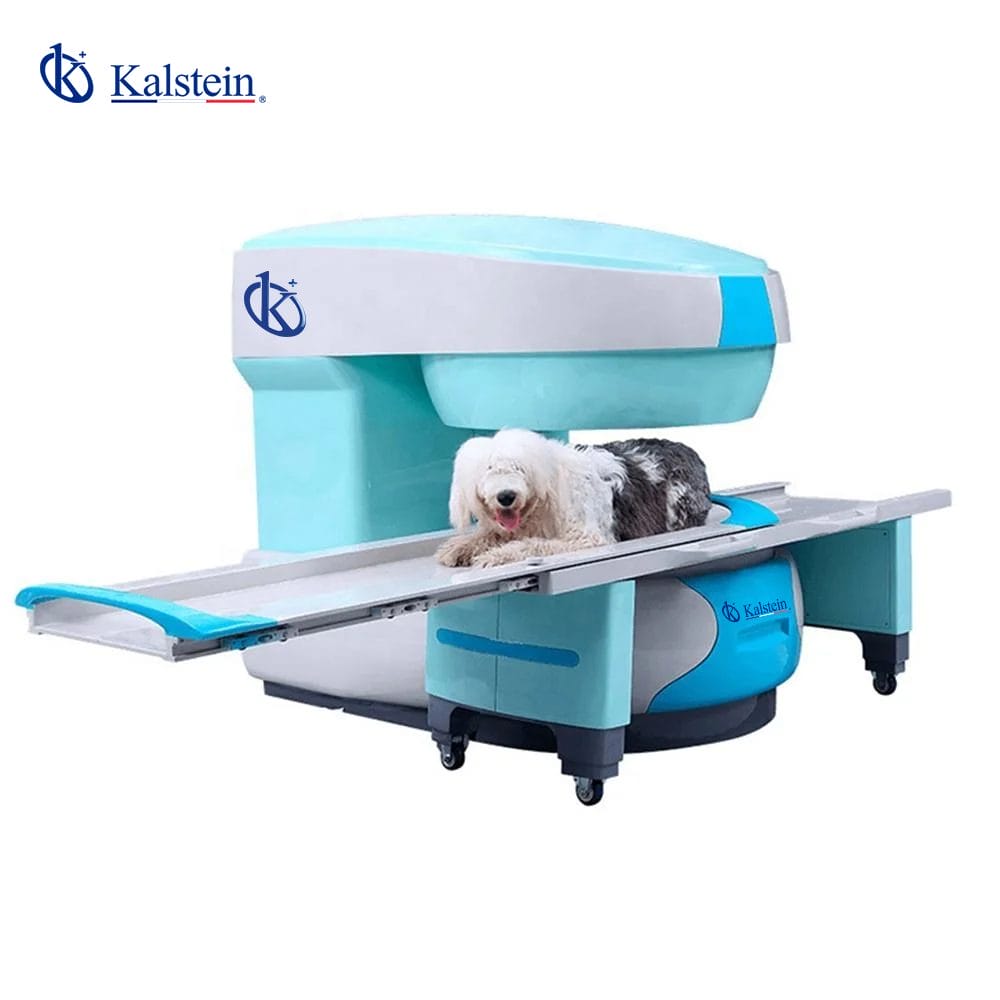Veterinary Magnetic Resonance Imaging is a tool that has revolutionized the field of veterinary medicine, allowing for precise and non-invasive diagnoses in all types of animals. This cutting-edge technology uses powerful magnets and radio waves to create detailed images of the inside of animals’ bodies, providing veterinarians with the necessary information to detect diseases, injuries, and other health problems quickly and effectively.
How Does Veterinary Magnetic Resonance Imaging Work?
The basic principle behind veterinary magnetic resonance imaging is nuclear magnetic resonance, a physical phenomenon in which the nuclei of certain atoms respond to a magnetic field by aligning themselves and emitting energy in the form of electromagnetic waves. In the case of veterinary magnetic resonance imaging, powerful magnets are used to align the atoms’ nuclei in the animal’s body, and then radiofrequency pulses are applied to disrupt this alignment.
This interaction between the nuclei and the radiofrequency pulses generates signals that are captured by special antennas and then processed by a computer to create detailed images of the animal’s internal anatomy.
Advantages of Veterinary Magnetic Resonance Imaging
Veterinary Magnetic Resonance Imaging offers a number of significant benefits for veterinarians and pet owners. Some of the most important advantages include:
1. Accurate Diagnosis: Veterinary magnetic resonance imaging provides high-resolution detailed images that allow veterinarians to detect diseases and injuries with unprecedented precision.
2. Non-Invasive: Unlike other diagnostic procedures, such as surgery or biopsy, veterinary magnetic resonance imaging is a non-invasive procedure that does not require anesthesia or recovery time.
3. Versatility: Veterinary magnetic resonance imaging can be used to diagnose a wide variety of medical conditions, including musculoskeletal injuries, tumors, neurological diseases, and much more.
4. Safety: Despite using powerful magnetic fields, veterinary magnetic resonance imaging is a safe procedure that does not harm the animals or the technicians performing the test.
Applications of Veterinary Magnetic Resonance Imaging
Veterinary Magnetic Resonance Imaging is used in a variety of clinical situations to diagnose diseases and injuries in animals. Some of the main applications of Veterinary Magnetic Resonance Imaging include:
1. Brain and Spinal Cord Imaging: Veterinary magnetic resonance imaging is especially useful for diagnosing neurological diseases in animals, such as brain tumors, disc hernias, and spinal cord injuries.
2. Musculoskeletal Imagery: Veterinary magnetic resonance imaging is used to diagnose musculoskeletal injuries in animals, such as ligament tears, bone fractures, and degenerative diseases like arthritis.
3. Soft Tissue Studies: Veterinary magnetic resonance imaging can provide detailed images of an animal’s body soft tissues, which helps veterinarians diagnose problems like tumors, cysts, and abscesses.
4. Cardiovascular System Evaluation: Veterinary magnetic resonance imaging can be used to evaluate the function of the heart and blood vessels in animals, helping to identify heart diseases and circulatory problems.
Important Considerations about Veterinary Magnetic Resonance Imaging
Despite all its benefits, veterinary magnetic resonance imaging also has some important considerations that veterinarians and pet owners must take into account:
1. Cost: Veterinary magnetic resonance imaging is a costly procedure, so it may not be affordable for all pet owners. It is important to talk to your veterinarian about payment options and pet insurances that can help cover the costs of magnetic resonance imaging.
2. Special Requirements: Veterinary magnetic resonance imaging requires the animal to remain immobile during the procedure, so it may be necessary to sedate the animal to ensure good image quality.
3. Availability: Not all veterinary hospitals have magnetic resonance imaging equipment, so it may be necessary to transfer the animal to a specialized clinic to perform the procedure.
In summary, veterinary magnetic resonance imaging is an invaluable tool for veterinarians who wish to perform accurate and non-invasive diagnoses in animals. With its ability to provide detailed images of the animals’ internal anatomy, veterinary magnetic resonance imaging has revolutionized the way diseases are diagnosed and treated in the animal world, offering better care quality and a longer life expectancy for pets.
If you want to know the catalog of high-end products that we have for you at KALSTEIN, visit us at https://kalstein.ee/category-product/veterinary-sector/veterinary-mri/ We also assure you that through our online PURCHASE channels, which are very easy and viable, you will find the best PRICES on the market. Remembering that we are a MANUFACTURING Company of high-level Laboratory Equipment for SALE. https://www.kalstein.ee/

